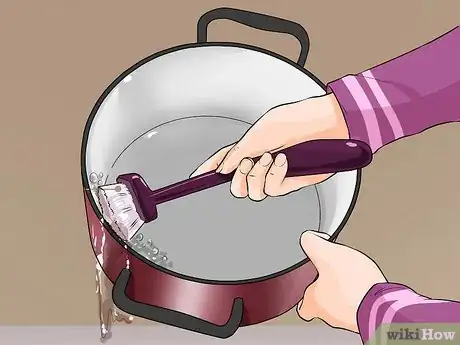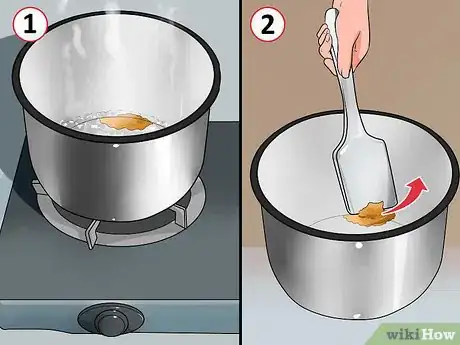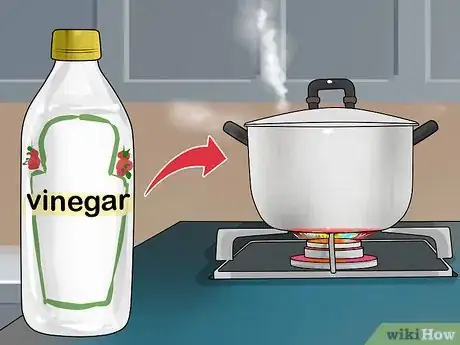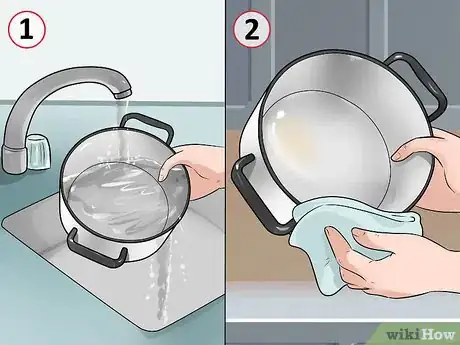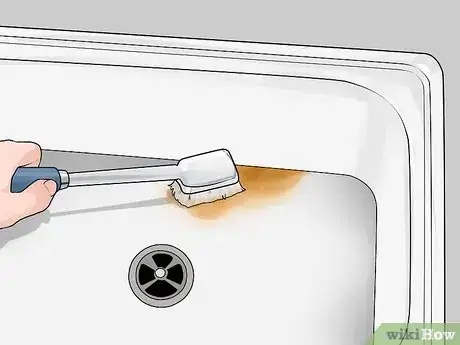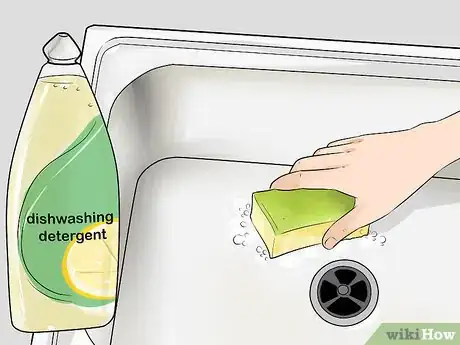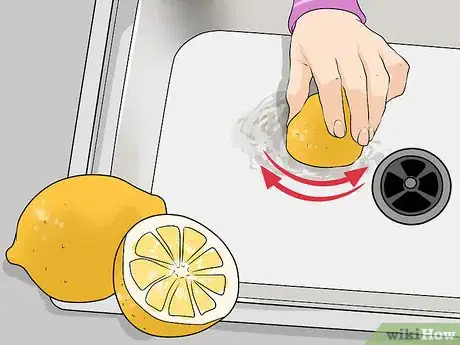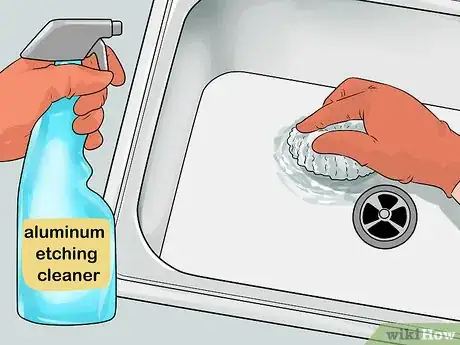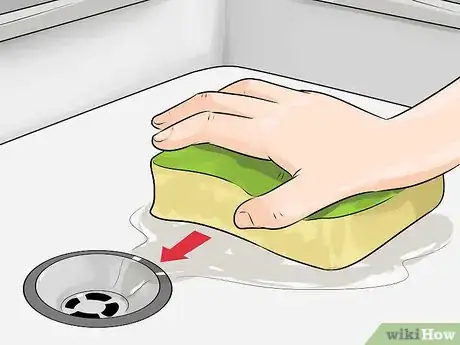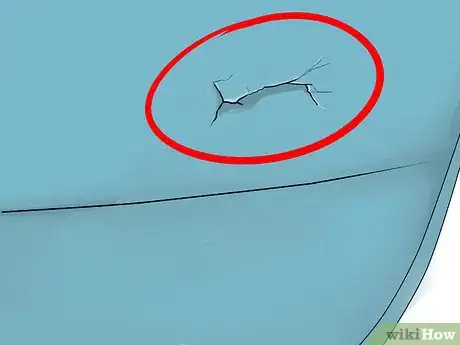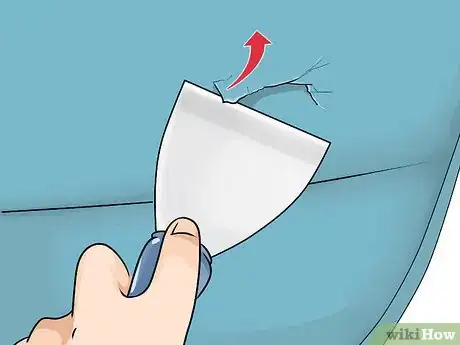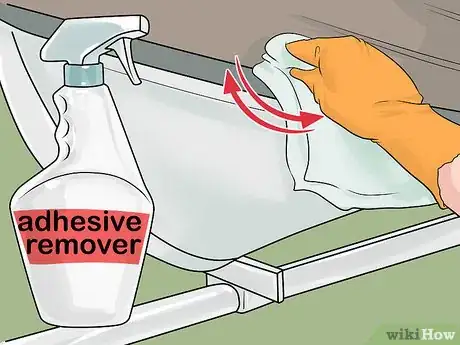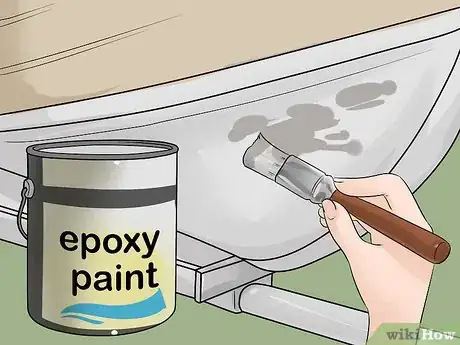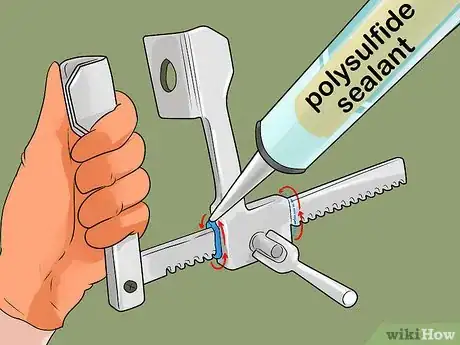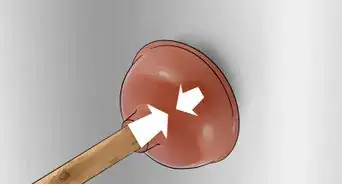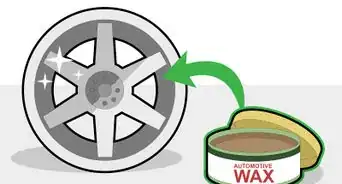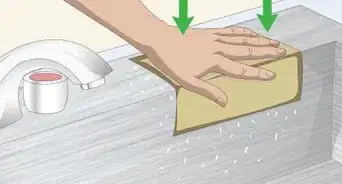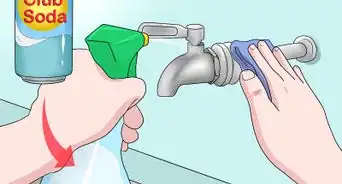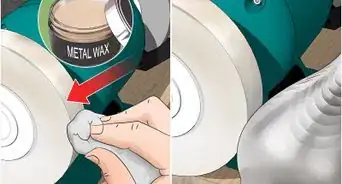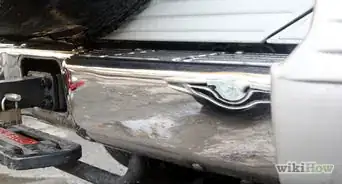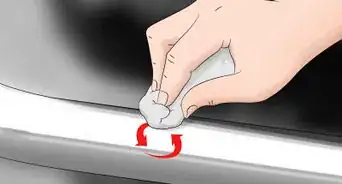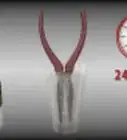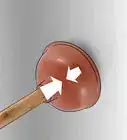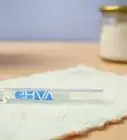This article was co-authored by wikiHow Staff. Our trained team of editors and researchers validate articles for accuracy and comprehensiveness. wikiHow's Content Management Team carefully monitors the work from our editorial staff to ensure that each article is backed by trusted research and meets our high quality standards.
This article has been viewed 74,622 times.
Learn more...
Aluminum oxidizes quickly, forming a dull, gray film that ruins its attractive finish. Usually, aluminum oxide is easy to fight off with natural solutions including lemon and vinegar. Be careful, however, about using abrasive scrubbing techniques, because these can scratch up the aluminum. A more serious condition, known as poultice corrosion can appear on painted aluminum particularly on boats.
Steps
Cleaning Aluminum Oxide from Cookware
-
1Clean off dust and grime with a soft bristle brush. Before removing corrosion, you need to clean off any dust or grime on top of it. Use a nonabrasive cleaner, like regular dishwashing soap.[1]
-
2Boil off caked on food. To get out burnt food on the bottom of your pots without damaging them, fill the pot with a couple inches of water. Put it on heat and allow it to reach a boil and leave it there for about 10 minutes. Afterward, remove it from the heat and use a wooden spatula to pull up the food, which should have been loosened up. Repeat this until the pot is clean.
- Refrain from using steel wool or Brillo Pads to pick up caked on food, because they can scratch up the pot and make it harder to clean in the future.
Advertisement -
3Boil vinegar or lemon juice in the pot. To remove oxidation, mix water and either vinegar or lemon juice in a pot. Turn on the heat and allow the mixture to cook for fifteen minutes after it hits a hard boil. Throw small aluminum cookware in the pot so that they can be treated as well. Repeat as necessary.
- The mixture should be about two tablespoons of lemon juice or vinegar for every quart of water.
-
4Rinse and dry the pot well. Run warm water over the cookware to carefully remove any residue of the lemon juice or vinegar. Then wipe it down with a rag to dry it off.
Cleaning Aluminum Oxide from Larger Surfaces
-
1Clean the surface with a soft bristle brush. Clean off dirt with a soft bristle brush. Try to remove all dust and large particles with the brush.[2]
-
2Wipe it down with dishwashing detergent and a sponge. Apply water and dishwashing detergent to a sponge. Use moderate pressure when wiping down the surface. Sometimes, this will be sufficient to remove oxidation.[3]
-
3Scrub with a lemon. If detergent did not remove the oxidation, try a lemon. Cut the lemon in half and place salt on the inside. Then rub the surface down with the inside of the lemon, so that the salt and acid of the lemon can remove aluminum oxide. Rub gently because the salt is abrasive.
- Alternatively, you can apply lemon juice and salt to a rag and use the rag to gently rub the aluminum.
-
4Use aluminum etching cleaner for hard to remove oxidation. For hard to remove oxidation, apply aluminum etching cleaner to stainless steel wool, grade 0000 to 000. Put on gloves and rub problem spots with the cleaner. Rub as gently as possible to remove corrosion.[4]
-
5Rinse the aluminum off with a clean sponge. Do not allow detergent, lemon, or other cleaners to dry on the surface. Use another wet sponge, without detergent, to wipe it down, removing the soap.[5]
Preventing Poultice Corrosion
-
1Watch for cracks in the paint. Paint prevents the formation of aluminum oxide, which can be unattractive, but prevents poultice corrosion. When the paint begins to crack on aluminum surfaces often exposed to water, poultice corrosion forms, eating away at the aluminum.[6]
- Poultice corrosion will appear as either a white powder or a white goo.
-
2Remove paint chips. Where the paint has begun to crack, scrape off paint from that area. You can use a putty knife to get under the paint and lift it up.[7]
- For larger areas, use 220-grit sandpaper to sand off the paint. Create a gradual transition along the edges between the painted area and the bare metal.
-
3Use general purpose adhesive remover to de-wax the surface. Apply the adhesive remover to a rag. Use the rag to wipe down the area where you have scraped off the paint.[8]
-
4Apply an epoxy paint. Find an epoxy paint that closely matches the paint on the surrounding area. Use a brush to apply a couple of coats of paint, so that there is a thick layer. There is no need to apply primer to a small spot before painting it.[9]
-
5Apply sealant around hardware. Movable hardware like fasteners and spreaders often rip up surrounding paint when they move. Thus, new paint jobs around the area usually won’t last long. Instead, apply a low-adhesion polyurethane or polysulfide sealant around the hardware base. Seal up the entire circumference of the hardware base, so that no paint can seep down to the aluminium.[10]
References
- ↑ https://www.hunker.com/12000866/how-to-clean-oxidized-aluminum
- ↑ https://www.hunker.com/12000866/how-to-clean-oxidized-aluminum
- ↑ https://www.hunker.com/12000866/how-to-clean-oxidized-aluminum
- ↑ https://www.hunker.com/12000866/how-to-clean-oxidized-aluminum
- ↑ https://www.hunker.com/12000866/how-to-clean-oxidized-aluminum
- ↑ http://www.proboat.com/2014/12/keeping-paint-on-aluminum/
- ↑ http://www.cruisingworld.com/how/how-touch-painted-aluminum
- ↑ http://www.cruisingworld.com/how/how-touch-painted-aluminum
- ↑ http://www.cruisingworld.com/how/how-touch-painted-aluminum
About This Article
To clean corroded aluminum from cookware, mix water with vinegar or lemon juice, place the solution in the pots, and allow them to simmer on the stove for 15 minutes before rinsing them clean. Alternatively, to clean aluminum oxide from larger surfaces, cut a lemon in half and place salt on the inside of it. Next, rub the surface down with the inside of the lemon so that the salt and acid can remove the aluminum oxide. For hard to remove oxidation, apply aluminum etching cleaner to stainless steel wool and rub as gently as possible to remove corrosion. To learn how to prevent poultice corrosion, keep reading!
